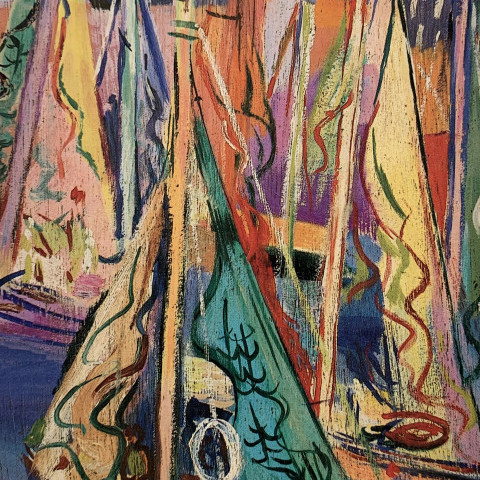Jean Dufy was born into a large artistic family in Le Havre in 1888. From a family of nine children, Jean Dufy was the younger brother of Raoul Dufy (1877-1953), and like his brother, he would celebrate Paris as one of his favorite subjects. The Dufy family was particularly musical, and the father was a talented amateur musician in addition to his profession as an accountant. The musical stage and composers of his era served as the lyrical subjects of many of Jean Dufy's paintings.
Little is known of Dufy's childhood in Le Havre, other than that he worked as an itinerant clerk for an overseas import business and as secretary on the transatlantic liner La Savoie, which linked Le Havre to New York. At the 1906 Le Havre exposition, he first saw the works of Matisse, Derain, Marquet and Picasso. After serving in the military from 1910 to 1912, Dufy moved to Paris and grew acquainted with Derain, Braque, Picasso, and Apollinaire. He showed his first watercolors at the Berthe Weill gallery in 1914, and these works show the hatching technique practiced by Cézanne and his brother Raoul.
Dufy was drafted shortly after this first exposition to fight in World War I. Upon returning from the war he received medical treatment in Val-d'Ajol, in the Vosges region, where he drew the landscapes, flowers, and horses of the region. In 1916, after briefly working with his brother for the textile-painting studio of the Bianchini-Férier company in Lyon, Dufy embarked upon what would become thirty years of decorating porcelain for Théodore Haviland in Limoges. His floral and animal-based designs earned him a gold medal at the 1925 International Exhibition of Decorative Arts for the Châteaux de France set.
In 1920, Dufy moved back to Paris, settling into Montmartre. Amid this intense artistic scene, the artist developed his skills as a colorist. He also met some of the great musicians of the day, and his work increasingly reflected the marriage of art and music. He created scenes of musicians and orchestras, and several showed the figures in the shapes and placements of musical notes upon a page. He also was attracted to painting circuses and clowns. In the following years, Jean's return visits to Le Havre inspired many colorful landscapes. For the 1937 World's Fair, the general manager of the Paris electricity distribution company commissioned Jean and Raoul to decorate the electricity pavilion.
Between 1950 and 1960, Dufy traveled widely, mostly in Europe and North Africa. Paris remained his favorite subject, drawing the parks, the Eiffel Tower, street life, and the Seine. During his life, Jean Dufy was a well-known painter with frequent expositions in Paris and the United States. He passed away on May 12, 1964, in La Boissière in the village of Boussay, two months after the death of his wife Ismérie.
Source: askart.com

